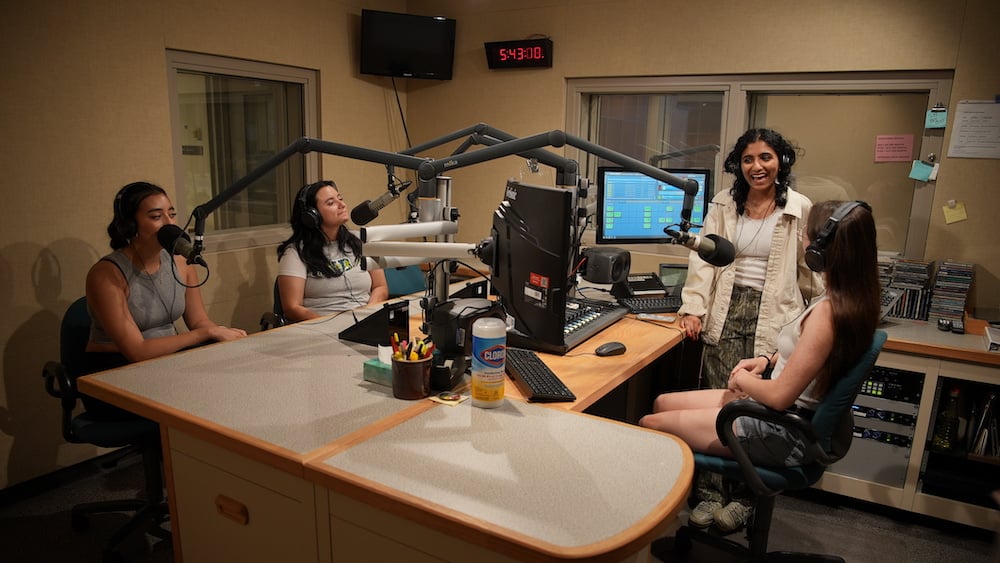More stations and universities should partner to realize ‘win-win-win’ potential, report says

Illinois Public Media
Illinois Student Newsroom reporters discuss story ideas Oct. 3 in the studio at Illinois Public Media.
Partnerships between public radio stations and their university licensees are an underutilized resource in the effort to address the local news crisis, a new report argues.
The report, “Building Synergy: Public Radio and Universities,” makes a case for greater coordination between stations and licensees, looks at the challenges standing in the way of such partnerships, and offers examples of strategies that stations and universities could adopt.
Station-licensee partnerships “have an absolute win-win-win potential, from our perspective,” said Richard Watts, founder and director of the University of Vermont’s Center for Community News, which put out the report.
“You can engage students in the public media enterprise and provide local news, and also possibly help public media enhance their worker pipeline,” he told Current. Involving students can also help expand the diversity of voices on air, he added.
But such partnerships are rare in public radio. Most of the system’s 182 university-licensed stations “do not have reliable reporting partnerships with their host universities,” the report found.
A survey fielded for the report found that three-quarters of the 95 stations surveyed said students have some involvement with their station. But three-quarters said that involvement is limited to internships, the report said.
“Traditional internships have not forged close relationships between public radio stations and their local universities, or established student reporting as a fixture in public newsrooms,” according to the report.
Stations said that a lack of funding and staff resources was one of the biggest challenges they faced in implementing journalism partnerships with students. They also cited “academic schedules, lack of interest on the part of the university, lack of trust, lack of understanding of how public radio works and bureaucratic challenges at the university,” the report said.
Yet stations are eager to partner with universities. Of the stations surveyed, 91% said they want to collaborate more with local universities, the report found.
“The argument that our center is making is that the universities need to step up” and take the lead on partnerships with stations, Watts said. “And there are some striking examples of that happening.”
The report highlights university-led partnerships that stations have undertaken with licensees. For instance, the University of Illinois hired a faculty member in 2020 who coordinates with Illinois Public Media to bring more student work to air. In 2021, more than 300 student-produced stories aired, according to the report, whereas previously only a handful of student stories aired each year.
Watts suggests that stations that want to strengthen partnerships with their universities should use the report as a starting point for a conversation. Though the report focuses on news, he said students can also get involved with other departments at stations, including marketing, advertising and fundraising.






